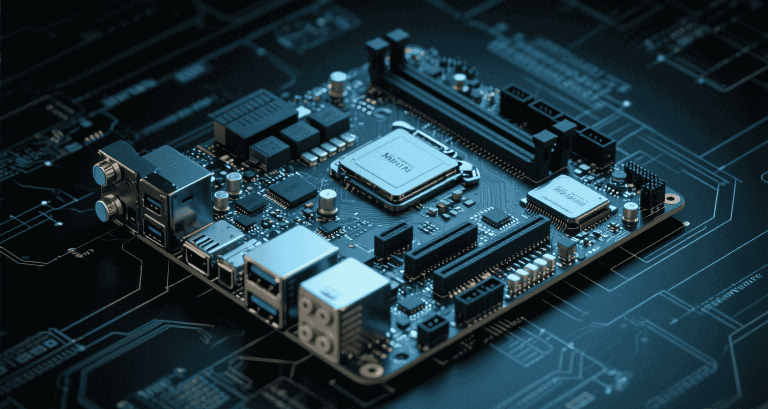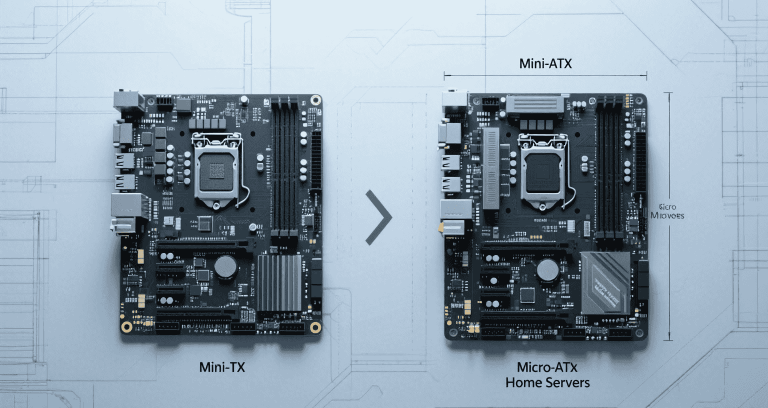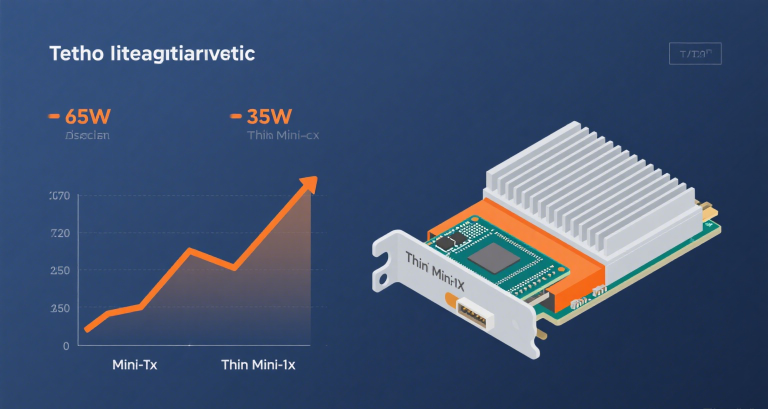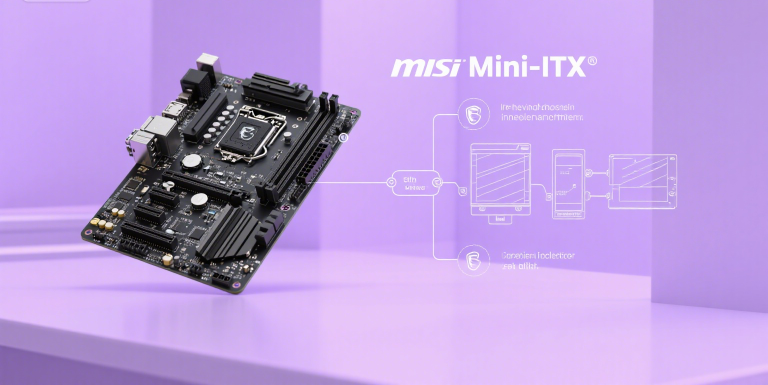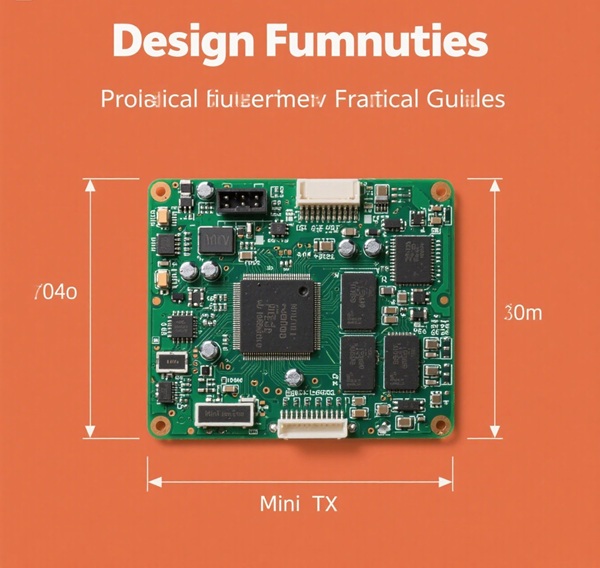Mini-ITX Board Size: Dimensions, Standards, and Design Considerations
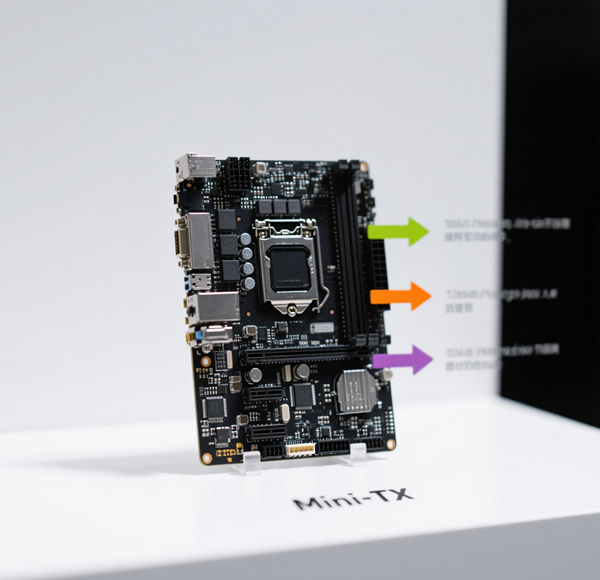
Table of Contents
- Introduction to Mini-ITX Boards
- Mini-ITX Board Size Specifications
- Height and Z-Dimension Considerations
- Mechanical Integration Dimensions
- Electrical and Thermal Design Considerations
- Impact of Board Size on System Integration
- Comparison with Other Form Factors
- Selecting the Right Mini-ITX Board
- Design Best Practices for Mini-ITX Systems
- Future Trends in Mini-ITX Design
- Q&A Section
- Conclusion
Introduction to Mini-ITX Boards
Over the past two decades, Mini-ITX motherboards have become foundational to compact computing. Originally developed by VIA Technologies in 2001, this form factor has found success in everything from industrial automation to gaming PCs. You probably appreciate Mini-ITX boards for their standardization and wide availability of accessories.
Growing Use Cases
- Industrial control panels needing low-profile enclosures
- Digital signage systems with limited mounting depth
- Edge computing applications requiring small footprints
- Home theater PCs combining performance and silence
Market Growth
Recent studies (*Embedded Systems Market Report 2024*) indicate Mini-ITX adoption is increasing at an annual growth rate of 11% as companies pursue smaller, more efficient designs.
“Compact form factors like Mini-ITX have redefined embedded computing by combining standardized connectivity and robust mechanical interfaces.” — Senior Engineer, MiniITXBoard
In this guide, I will help you understand dimensions, standards, integration challenges, and future trends in detail.
Mini-ITX Board Size Specifications
The Mini-ITX board’s popularity stems largely from precise dimensional standards, which make it easy to integrate into a variety of enclosures and chassis.
Standard Dimensions
| Metric | Specification |
|---|---|
| Width | 170 mm ±0.5 mm |
| Depth | 170 mm ±0.5 mm |
| PCB Thickness | Typically 1.6 mm |
| Mounting Holes | 4 holes, 6.35 mm pads |
Mounting Hole Patterns
Mounting holes are precisely located 6.35 mm from the edges to ensure compatibility with ATX and SFX cases.
Torque Recommendations
| Screw Type | Torque (N·m) |
|---|---|
| M3 | 0.5 – 0.6 |
| 6-32 | 0.8 – 1.0 |
Layer Stackup Considerations
- 6-layer PCB common for signal integrity
- 1 oz or 2 oz copper layers improve current carrying capacity
- Dielectric spacing typically ~0.15 mm
Tip: For high-power designs, consider 2 oz copper layers to improve heat dissipation.
Height and Z-Dimension Considerations
While footprint defines compatibility, the board’s height profile determines whether components can fit inside low-profile cases.
CPU Cooler Clearance
- Standard clearance in compact cases: 40–55 mm
- Popular low-profile cooler: Noctua NH-L9i (37 mm)
Practical Example
If you plan to use a 1U rackmount chassis, ensure your heatsink is <40 mm tall, including fan.
Memory Module Height
| Memory Type | Max Height (mm) |
|---|---|
| DIMM | 31 |
| SO-DIMM | 30 |
Clearance above memory modules can be restricted by the power supply.
PCIe Card Heights
| Card Type | Max Height |
|---|---|
| Full-height | 120 mm |
| Half-height | 69 mm |
| Low-profile | 64 mm |
Always verify card brackets are properly matched to your enclosure.
Mechanical Integration Dimensions
Mounting, weight distribution, and connector placement affect reliability and serviceability.
Board Weight
- Bare board: ~350g
- Fully populated: ~600g
Antenna and Front Panel Connectors
Wireless modules require 2–3 cm clearance around antennas, while front-panel connectors must be accessible without cable strain.
Case Example
A digital signage integrator at MiniITXBoard routed antenna cables along the chassis edge to prevent EMI with the power delivery plane.
Electrical and Thermal Design Considerations
Power delivery and heat dissipation determine system stability and lifespan.
Power Connectors and Current
| Connector | Pin Count | Max Current per Pin |
|---|---|---|
| 24-pin ATX | 24 | 6 A |
| 4/8-pin EPS | 4/8 | 8–10 A |
Thermal Management
- Passive heatsinks are silent but may limit thermal margin.
- Active coolers improve performance but add noise.
Cooling Method Comparison
| Method | Noise Level | Thermal Efficiency |
|---|---|---|
| Passive | Silent | Moderate |
| Active | Low–Moderate | High |
Impact of Board Size on System Integration
Compact boards create specific challenges when integrating storage, cables, and cooling.
Expansion Card Limitations
Most Mini-ITX boards have only one PCIe slot, sometimes electrically limited to x4 lanes.
Clearance Constraints
- Vertical clearance often <60 mm in 1U cases
- Cable bend radius requires special attention
Mechanical Interference Example
One client found their SATA cables obstructed airflow, raising CPU temperatures by 15°C. Proper routing resolved the issue.
Comparison with Other Form Factors
Mini-ITX offers an ideal balance of size and expandability.
| Form Factor | Dimensions | Expansion Slots |
|---|---|---|
| Mini-ITX | 170×170 mm | 1 PCIe |
| Micro-ATX | 244×244 mm | Up to 4 PCIe |
| Nano-ITX | 120×120 mm | 1 Mini-PCIe |
| Pico-ITX | 100×72 mm | 1 Mini-PCIe |
Selecting the Right Mini-ITX Board
Your choice should align with your power, performance, and I/O requirements.
CPU Options
- Intel Atom for low power
- Intel Core for higher performance
- AMD Ryzen Embedded for balanced workloads
Memory and Storage
| Memory Type | Max Capacity |
|---|---|
| SO-DIMM | 64 GB |
| DIMM | 64 GB |
Consider M.2 NVMe for fast storage.
Design Best Practices for Mini-ITX Systems
Follow these principles for reliability:
- Use CFD tools to model airflow.
- Choose PSUs rated for peak loads.
- Route cables to minimize EMI.
Future Trends in Mini-ITX Design
Expect more integration in the same form factor:
- Wi-Fi 6E and 10GbE onboard
- Edge AI accelerators
- Enhanced regulatory compliance
Q&A Section
Q1: Can I build a gaming PC on Mini-ITX?
A: Yes, but ensure cooling and GPU compatibility.
Q2: What about RAID support?
A: Many boards support RAID 0/1 via SATA or NVMe.
Q3: How much power does a build consume?
A: Typically 50–150W depending on components.
Q4: How do I choose a power supply?
A: Flex-ATX or SFX PSUs are recommended.
Q5: Are there expandability limits?
A: Yes—usually only one PCIe slot.
Q6: Is cooling difficult?
A: Not with proper planning and airflow.
Conclusion
Mini-ITX remains the gold standard for compact systems. By understanding the dimensions, thermal considerations, and power delivery, you can design reliable embedded and industrial solutions. For help choosing the right board or customizing your design, visit MiniITXBoard.

